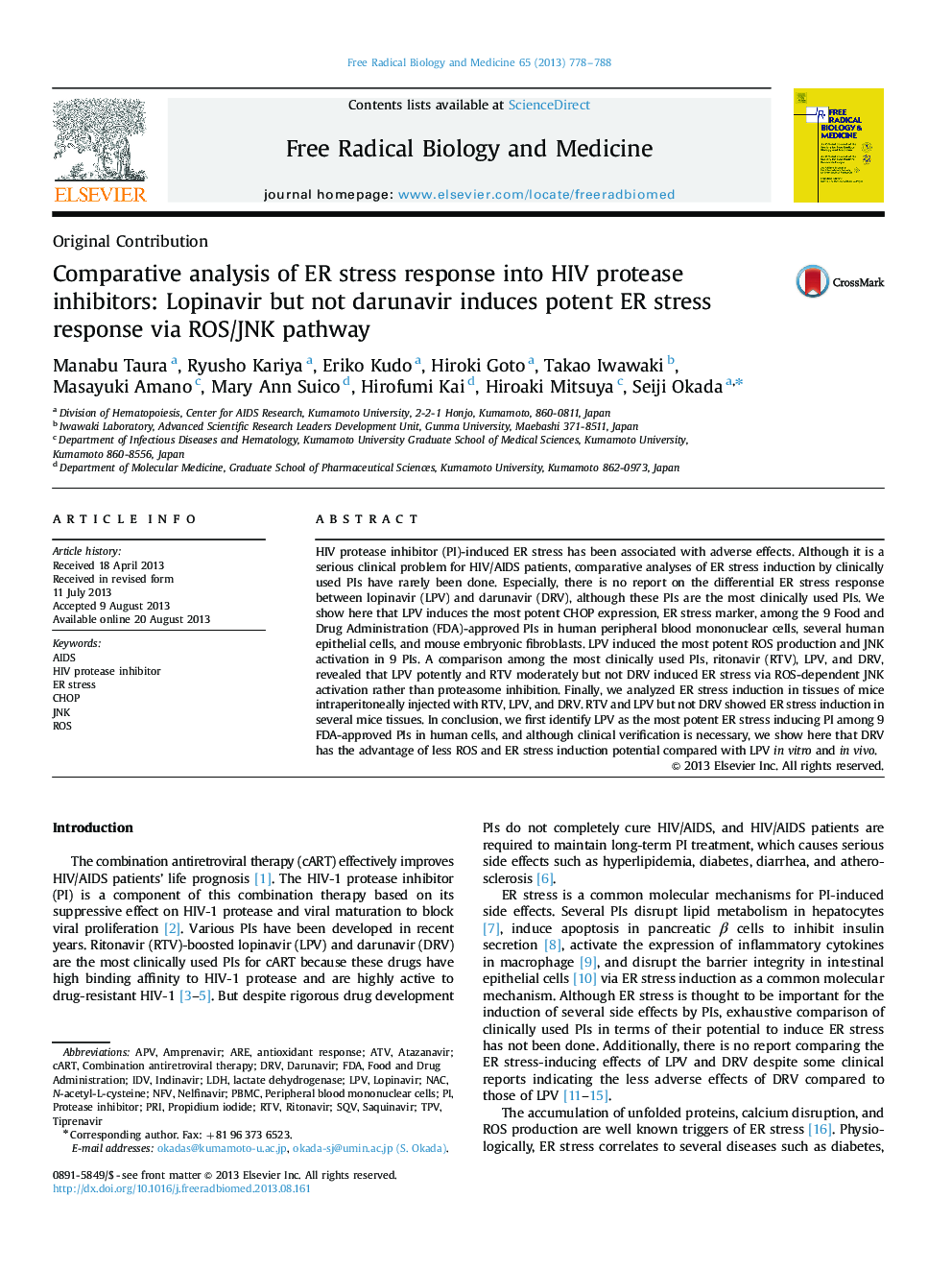| Article ID | Journal | Published Year | Pages | File Type |
|---|---|---|---|---|
| 8271711 | Free Radical Biology and Medicine | 2013 | 11 Pages |
Abstract
HIV protease inhibitor (PI)-induced ER stress has been associated with adverse effects. Although it is a serious clinical problem for HIV/AIDS patients, comparative analyses of ER stress induction by clinically used PIs have rarely been done. Especially, there is no report on the differential ER stress response between lopinavir (LPV) and darunavir (DRV), although these PIs are the most clinically used PIs. We show here that LPV induces the most potent CHOP expression, ER stress marker, among the 9 Food and Drug Administration (FDA)-approved PIs in human peripheral blood mononuclear cells, several human epithelial cells, and mouse embryonic fibroblasts. LPV induced the most potent ROS production and JNK activation in 9 PIs. A comparison among the most clinically used PIs, ritonavir (RTV), LPV, and DRV, revealed that LPV potently and RTV moderately but not DRV induced ER stress via ROS-dependent JNK activation rather than proteasome inhibition. Finally, we analyzed ER stress induction in tissues of mice intraperitoneally injected with RTV, LPV, and DRV. RTV and LPV but not DRV showed ER stress induction in several mice tissues. In conclusion, we first identify LPV as the most potent ER stress inducing PI among 9 FDA-approved PIs in human cells, and although clinical verification is necessary, we show here that DRV has the advantage of less ROS and ER stress induction potential compared with LPV in vitro and in vivo.
Keywords
CARTSQVIDVFDAIndinavirNFVRTVTPVLPVDRVATVAPVN-acetyl-l-cysteinePRIJnkNACPBMCROSAmprenavirAtazanavirER stressAIDSCHOPDarunavircombination antiretroviral therapyRitonavirFood and Drug AdministrationSaquinavirperipheral blood mononuclear cellslactate dehydrogenaseLDHLopinavirProtease inhibitorHIV protease inhibitorNelfinavirAREAntioxidant responsePropidium iodide
Related Topics
Life Sciences
Biochemistry, Genetics and Molecular Biology
Ageing
Authors
Manabu Taura, Ryusho Kariya, Eriko Kudo, Hiroki Goto, Takao Iwawaki, Masayuki Amano, Mary Ann Suico, Hirofumi Kai, Hiroaki Mitsuya, Seiji Okada,
